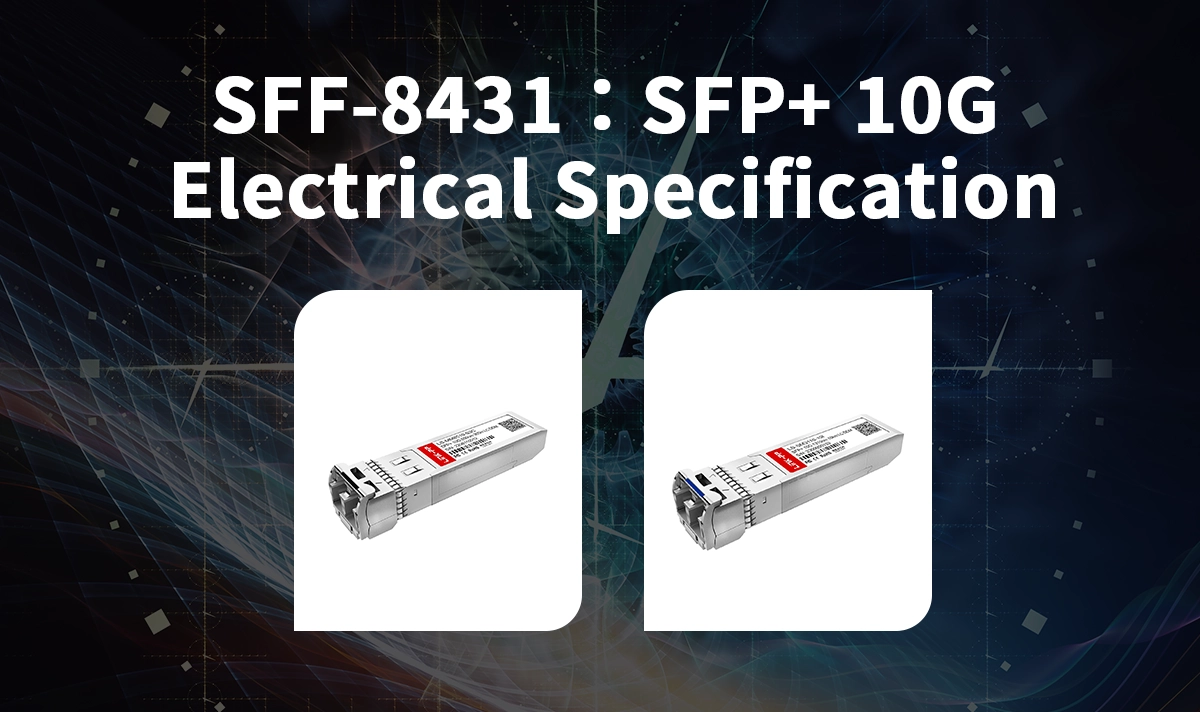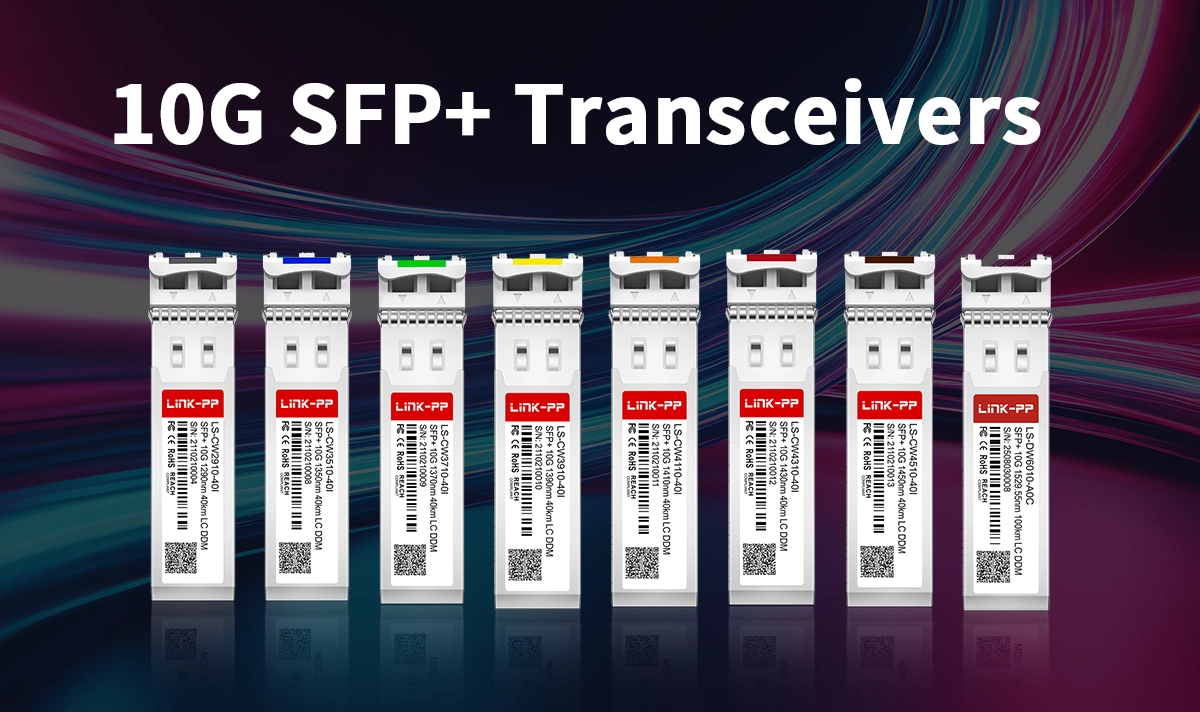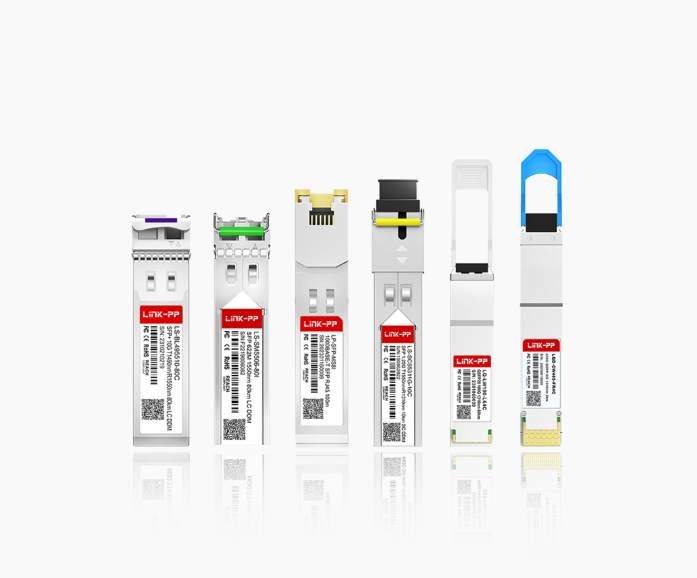
SFF-8431 (official title: Enhanced 8.5 and 10 Gb/s SFP+) is the industry Multi-Source Agreement (MSA) defining electrical signaling, compliance criteria, and host-module interface behavior for SFP+ transceivers operating up to 10.3125 Gb/s.
In practical terms, SFF-8431 ensures that 10G SFP+ transceivers and switching/routing equipment from different vendors operate reliably together with predictable electrical margins and signal integrity.
📘 Why SFF-8431 Matters for Network Engineers and Product Teams
Interoperability Across Vendors
SFF-8431 standardizes electrical characteristics so SFP+ modules and host systems interoperate seamlessly in data center, telecom, and enterprise networks.
Predictable Signal Integrity
The specification defines eye masks, equalization expectations, and jitter limits, reducing bit-error rate (BER) and ensuring link stability at 10G speeds.
Compliance and Testability
SFF-8431 includes defined compliance test suites and electrical conformance criteria, enabling predictable mass-production validation and debugging.
📘 Technical Scope: What SFF-8431 Covers
High-Speed Serial Lanes (Up to 10.3125 Gb/s)
Differential TX/RX electrical characteristics
Output swing and de-emphasis requirements
Eye-mask compliance for 10G signaling
Equalization and jitter specifications
Low-Speed Control & Monitoring
I²C management interface (SDA/SCL)
TX_DISABLE, MOD_ABS, LOS, and fault signals
Hot-plug detect and safe power-up behavior
Power and Connector Behavior
Although mechanical and thermal rules are defined in SFF-8432, SFF-8431 ensures compatibility with 3.3 V supply rails, module-side control pins, and host SERDES PHY parameters.
📘 Practical Design Guidelines for SFF-8431 Hosts
High-Speed PCB Layout
Maintain 100 Ω differential impedance
Minimize stubs on the SFP+ cage connection
Tight return-path control to minimize crosstalk and EMI
Short, symmetrical differential pair routing
Signal Integrity & Equalization
Use CTLE/DFE or host SERDES equalization for lossy channels
Model channel loss and dispersion in simulation
Apply common-mode chokes and proper shielding
Compliance & Validation
Use conformance test fixtures and S-parameter models
Verify compliance at both module and host levels
Test multiple vendor optics for field reliability
📘 Key Electrical Notes for Engineers
(Representative values — always verify against latest SFF-8431 document)
Parameter | Typical / Required Behavior |
|---|---|
Maximum Data Rate | 10.3125 Gb/s |
Differential Impedance | 100 Ω nominal |
Supply Voltage | 3.3 V rail |
Interface Type | AC-coupled differential pairs |
Control Interface | I²C + low-speed control pins |
📘 SFF-8431 in Deployment Scenarios
Use Case | Role |
|---|---|
Data Centers | TOR switching, 10G aggregation, spine-leaf |
Telecom Networks | |
Enterprise Networks | 10G uplinks, distribution/core switching |
Storage Networks | 10G Fiber Channel environments |
📘 SFF-8431 vs IEEE 802.3 (Clarified)
Standard | Purpose |
|---|---|
SFF-8431 | Defines electrical interface for SFP+ |
IEEE 802.3 | Defines 10GbE MAC/PHY protocols |
They operate together — not as alternatives.
📘 LINK-PP 10G SFP+ Transceivers and SFF-8431 Compliance

LINK-PP’s 10G SFP product portfolio is engineered to align with SFF-8431 electrical requirements, including:
Controlled launch amplitude and eye-mask compliance
Low power consumption designs
Hot-plug safety and I²C-based diagnostics
Verified compatibility with major OEM switches and NICs
Explore products:
LINK-PP 10G SFP+ Transceiver
Typical options include:
10GBASE-SR SFP+ (MMF, 300 m)
10GBASE-LR SFP+ (SMF, 10 km)
10G SFP+ DAC/AOC passive and active cables
📘 FAQ
Is SFF-8431 backward compatible with SFP?
Yes, many SFP+ ports support SFP optics, but link speed typically drops to 1G. Always verify device vendor documentation.
Do I need retimers or equalizers?
For longer PCB traces or high-loss channels, host-side equalization or retimers are recommended to meet SFF-8431 margins.
📘 Conclusion
SFF-8431 is the foundation of the global 10G SFP+ ecosystem, enabling reliable, multi-vendor interoperability at high speeds.
To meet real-world performance expectations, hardware teams should prioritize:
100 Ω differential routing and signal-integrity discipline
Compliance testing and multi-vendor validation
Use of certified SFP+ modules from trusted suppliers
LINK-PP’s 10G SFP+ Optic Modules follow SFF-8431 requirements, ensuring stable, standards-based performance in telecom and data center networks.
📘 Next Steps
Explore technical datasheets and request engineering support:
LINK-PP 10G SFP+ Transceiver




